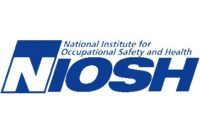From the NIOSH Director's Desk
Using science to assess workplace hazards: NIOSH practices in occupational risk assessment

What is risk assessment? Do you check for rain before deciding to carry an umbrella? Doing so is an example of risk assessment, which describes a process for answering three basic questions on a particular hazard:
What can happen? (It may rain today.)
How likely will it happen? (The Weather Channel says 70% chance of showers.)
What are the consequences if it happens? (I’ll be soaked without my umbrella!)
The answers provide a foundation for preventing or lessening the threat imposed by the hazard (e.g., carry an umbrella to avoid getting wet if caught in the rain), known as risk management. As part of the human experience, we assess and manage many kinds of risks in our daily lives: financial risks, social risks, and occupational risks. In doing so, we identify hazards (the rain), their opportunity (chance of rain), and harm (get wet). We weigh the evidence on the hazard, opportunity, and harm to choose appropriate safeguards (an umbrella) to protect us from the hazard.
There is a pressing need for risk assessment, especially for workplace chemicals. Over 50 million U.S. workers are exposed to hazardous chemicals at work, either by skin contact or by inhaling vapors, gas, dust, or fumes. Toxic chemicals in the workplace pose a wide range of health hazards to workers, such as respiratory disease and cancer.
NIOSH traces its origins in quantitative risk assessment to the 1980 landmark Supreme Court decision “Industrial Union Department, AFL-CIO v. American Petroleum Institute,” 448 U.S. 607, also called the Benzene Decisionexternal icon. The ruling established a need to quantify the risks from chemical exposure as a basis for recommending exposure limits. Since then, NIOSH has published risk assessments on chemical hazards including carcinogens and noncarcinogens, physical hazards such as noise and radiation, and others. These efforts have culminated in a set of best practices in meeting its mandate under Section 20(a)(3) of the Occupational Safety and Health Act of 1970 “…to describe…exposure levels at which no employee will suffer impaired health or functional capacities or diminished life expectancy as a result of his work experience.” We now share these best practices with you through a new report that describes the NIOSH processes used to evaluate occupational hazards in the workplace through risk assessment. This process supports recommended exposure limits (RELs) and risk management limits for carcinogens (RML-CAs) published in criteria documents and current intelligence bulletins, along with other authoritative recommendations like exposure banding.
NIOSH risk assessments begin with input from key stakeholders and partners, such as government agencies, organized labor, industry, and other scientists. The first step in risk assessment is hazard identification, which for a chemical in the workplace, considers the nature and strength of the evidence on the harm the chemical may cause. The dose-response assessment follows, quantifying the harm at different levels of exposure. The final step, risk characterization, synthesizes all of the information to provide a basis for NIOSH recommendations for risk management actions, such as RELs and RML-CAs.
We all want to stay dry in the rain and stay healthy at work. Risk assessment helps us do both.
Looking for a reprint of this article?
From high-res PDFs to custom plaques, order your copy today!








